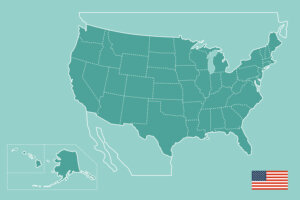Question Design
The way you design your questions will certainly affect the way the questions are answered. Or even IF they’re answered! We’ve all been caught on the phone with a surveyor who promised to take 3 minutes, then proceeded to ask 15 or more questions. Don’t ever be that person.
The Golden Rule “Do unto others…” certainly applies here.
Basics of Survey Questions
Keep questions short and easy to read. The longer and more complex the questions, the less accurate feedback you’ll get. This is particularly true of phone surveys.
Keep questions easy to answer, otherwise participants may abandon the survey, or provide incorrect information (e.g., giving the same answer/value for all questions, simply to get through the survey).
Keep “required” questions to a minimum. If a participant can’t or doesn’t want to answer a required question, they may abandon the survey.
Use a consistent rating scale (e.g., if 5=high and 1=low, keep this consistent throughout all survey questions). For rating scales, make sure your scale is balanced (e.g., provide an equal number of positive and negative response options).
Label each point in a response scale to ensure clarity and equal weight to each response option.
For closed-ended questions, include all possible answers, and make sure there is no overlap between answer options.
- Use consistent word choices and definitions throughout the survey.
- Avoid technical jargon and use language familiar to participants.
- Be as precise as possible to avoid word choice confusion. Avoid words like “often” or “rarely”, which may mean different things to different people. Instead, use a precise phrase like “fewer than three times per week.”
- Try to construct the questions as objectively as possible.
‘Skip Logic’ or ‘Conditional Branching’
When creating technology-based surveys, skip logic can be helpful. Skip logic enables you to guide participants to a specific follow-up question, based on a response to an earlier question. This technique can be used to minimize non-relevant questions for each participant, and for filtering out survey participants. For example, if you are looking for U.S. citizens only to fill out certain parts of your survey, anyone who answers “no” to the question “Are you a U. S. citizen?” can be skipped to the next relevant section.
Next time, we’ll discuss common survey question types and examples.
(Many thanks to USA.gov for guidance on question design.)
Do you have a favorite style for designing survey questions?
——————
For more resources, see our Library topics Marketing and Social Networking.
.. _____ ..
ABOUT Lisa M. Chapman:
Ms. Chapman’s new book has a name change! The Net-Powered Entrepreneur – A Step-by-Step Guide will be available in April 2012. Lisa M. Chapman serves her clients as a business and marketing coach, business planning consultant and social media consultant. She helps clients to establish and enhance their online brand, attract their target market, engage them in meaningful social media conversations, and convert online traffic into revenues. Email: Lisa @ LisaChapman.com
 Sections of this topic
Sections of this topic














